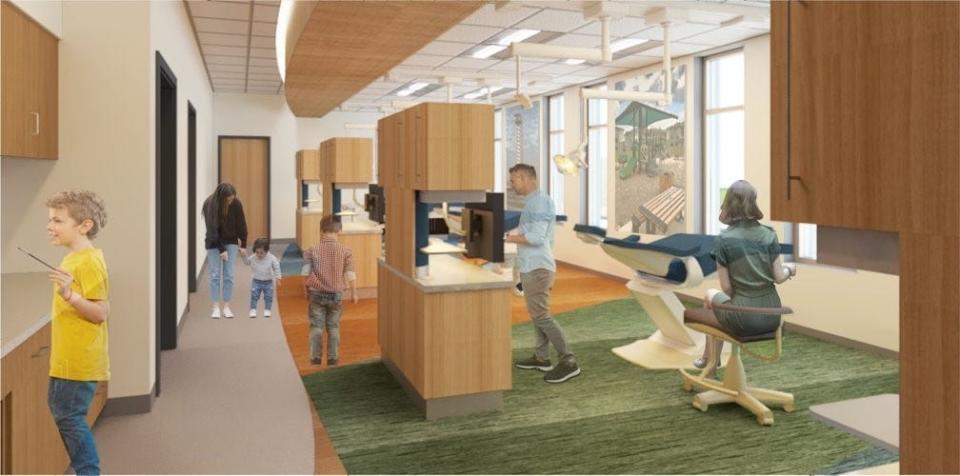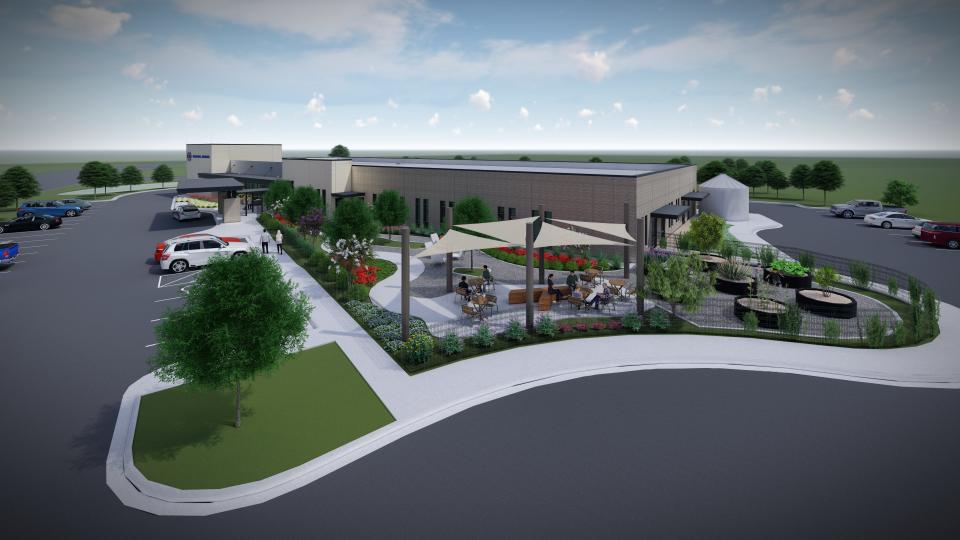Central Health's demographics report: a story of poverty and health access in Travis County

Central Health, the hospital district of Travis County, has released a new demographics report, which tracks the population it serves and predicts the needs of that population in five years.
Central Health is tasked with providing health care to people at or below 200% of the federal poverty level. For a family of four with two wage earners, the poverty level is an annual income of $27,750.
Central Health provides health care through its Medical Access Program and Medical Access Program Basic, which are taxpayer-funded health insurance plans. It also pays health premiums for some people who enroll in its Sendero health insurance plan on the Affordable Care Act's marketplace.
Central Health is funded through a property tax rate of 9.864 cents per $100 valuation.
It has come under fire from critics who say it is not providing enough direct care to the community, an issue that is the subject of a lawsuit. Central Health has sued its hospital partner Ascension Texas, and that hospital system has filed a countersuit.
The demographics report analyzed who is using Central Heath's services, where its enrollees live, where other clusters of poverty can be found, and what challenges people face in accessing care.
The report's synopsis mentions some key findings:
Communities of poverty continued to be clustered mainly along Interstate 35.
People had more health care access issues than just having a clinic nearby, such as transportation and the ability to take off work.
40% of its patient population had a chronic illness.
The rates of chronic illnesses such as asthma, heart disease, high blood pressure and kidney disease were higher among Black patients, but diabetes was highest among Latinos. These illnesses could not be tied to a particular geographic area.
The rates of chronic illness in people without housing were 1.5 to 2 times higher than in people with housing.
Central Health has been doing demographics reports since 2015. The last one came out in 2020. It will use this report to plan for expansion of services, including where new clinics should go and what type of health specialists it should fund.
"It's going to allow us to look at what's already in the hopper and where we might need to turn our attention next," said Monica Crowley, chief strategy officer and senior legal counsel.
Because of this work, Central Health is building new clinics in the Hornsby Bend neighborhood in far eastern Travis County and in Del Valle in southeastern Travis County. It is creating a specialty clinic at the Rosewood-Zaragosa Health Center in East Austin.
Central Health will share this research with the public, Travis County commissioners and other government entities such as Capital Metro and its partners at federally qualified health centers.
There's a lot of information in the 62-page report, but here are some key takeaways:

Central Health is taking care of fewer people
Central Health provides health care for 1 out of every 12 people in Travis County. In the 2021 fiscal year, it enrolled 111,027 people in one of its plans. That was down 8.4% from 2019. The number of families in poverty has risen 2% in Travis County since 2020.
In all but one of its nine identified geographic areas of concentrated poverty, it enrolled fewer people than in 2019. That area, north of Howard Lane, has seen 40% growth in families in poverty but has had only a 5.9% increase in enrollment since 2019.
Even areas that had a slight decrease in poverty levels had an even bigger decrease in the number of people served by Central Health.
The decrease, Central Health says, is in part because of the COVID-19 pandemic making it harder to enroll people.
"Like so many systems, we are seeing trends going back to pre-pandemic levels," said Matt Richardson, senior data strategy analyst at Central Health. "Enrollment will be back even, if not exceeding, in the not too distant future. Poverty is not disappearing,"
Only half of its enrollees access care
Of the people Central Health enrolled in a plan, only 56.5% used a service in fiscal year 2021.
Central Health explained that when one family member accesses care, it enrolls all of the family members at the same time. They are all assigned a primary care doctor, but not everyone in the family will see any doctor. They might think of the service as only for the person who needs the clinic or hospital care right then.
"We want to address this as an organization so people understand that even if you are younger, healthy, feel good right now, it's important to engage in health care on a preventative way," Crowley said.
Central Health has focused heavily on getting people enrolled, but getting them to use their benefits will be something it will be working on, said Ted Burton, the organization's chief communications officer.
Funding debate: Central Health to Dell Medical School: Where does our $35 million go?
Poverty, even in concentrations, is all around
The report identified nine areas with poverty populations in Travis County, and two were west of Interstate 35: North Central, bounded by Braker Lane, Anderson Lane, Interstate 35 and MoPac Boulevard (Loop 1); and Oak Hill in Southwest Austin.
North Central had the highest number of enrollees and the highest number of families in poverty. It had the lowest median income among the nine poverty populations and the most affordable housing units.
North Central also had the highest number of enrollees who did not access care, but it had five primary care clinics.
This area, said Jessie Patton Levine, Central Health's analytics quality manager, "far eclipses the need of other areas, but they have a significant amount of services there."
Particularly in this area, "we have findings that show there are factors greater than location that affects people's ability to access health care," Patton Levine said.
Central Health will be looking at what those factors are, but it could include not being able to take time off from work or families not having a longtime practice of regularly seeking medical care.
Oak Hill was the only new geographic area added since the 2020 report. Oak Hill saw a 21% increase in family poverty, while the overall population growth there was 4%.
Oak Hill also had the most enrollees who speak Spanish at 74%. It had half as many enrollees as the Del Valle area, even though the two areas had similar poverty population numbers.
While most of the other areas of poverty have a lot of multifamily housing units, most of Oak Hill's people in poverty were living in mobile homes. This area also had the highest median household income of all of the areas studied by Central Health.
Funding care: Central Health, Ascension Seton sue each other in ongoing contract fight
Transportation is an issue
Some areas such as North Central in Austin had a good number of bus stops and transit hubs, but other areas such as Oak Hill had no routes or stops, and Del Valle had only one bus route. This influences someone's ability to access health care.

Being unhoused is a serious health issue
This is the first time Central Health included in its demographics report data about people who are experiencing homelessness. Among its findings:
39.9% of all enrollees had a chronic health condition, but for people experiencing homelessness it was 57.4%.
All enrollees had an average of 2.5 chronic conditions, but for people experiencing homelessness it was 3.2 chronic conditions.
All enrollees used services five times in the fiscal year, but people experiencing homelessness had six encounters.
For all enrollees, 1 in 28 people who used services had all of their medical encounters in the emergency room, but for people experiencing homelessness, it was 1 in 10.
Innovation:'Saved my life': How an Austin team is bringing medical care to the homeless
People aren't leaving Travis County because of affordability
This demographics report found poverty in all of the surrounding counties, but people living in poverty are staying in Travis County.
"This narrative by a lot of people in the community that everybody is leaving Travis County, the data doesn't show that," Burton said. "People can't just pick up and move."
Austin and Travis County have the resources, including nonprofit groups building affordable housing, Capital Metro and food support, said JP Eichmiller, Central Health senior director of strategy and information design. People have to stay for those services.
Central Health cares about Tesla
Page 5 of the report talks about the growth of the areas near the Texas 130 tollway that have potential for affordable housing but are being overshadowed by manufacturing growth, including Tesla and mixed-use growth with retail spaces planned. There is a concern that housing won't keep up with the growth of the region.
That could affect where people in poverty can live and where they will access care.
This article originally appeared on Austin American-Statesman: Central Health report maps poverty and health access in Austin

